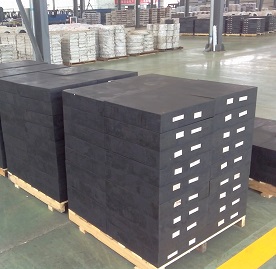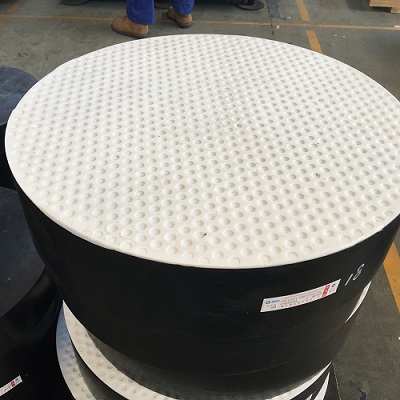Introduction
Steel reinforced elastomeric bearing pad is produced by steel reinforced plated inside, bonding with layers of rubber and vulcanized
The bearing pad has good vertical stiffness to bear the vertical loading, and it can forward the pressure of upper part of bridge to the pier. The rubber bearing pad has good elasticity to adapt to the rotation of the beam end; There is significant shear deformation to meet the horizontal displacement of the upper structure; It has the characteristics of simple structure, safety and convenience, steel saving, low price, easy maintenance, and easy replacement

The PTFE sliding rubber bearing is made by gluing a layer of PTFE plate with a thickness of 2-4mm on a regular elastomeric rubber bearing according to the size of the bearing
The PTFE sliding plate type bearing not only has the vertical stiffness and elastic deformation of ordinary plate rubber bearings, but also can withstand vertical loads and adapt to beam end rotation, and utilizes the low friction coefficient between PTFE plates and stainless steel plates( μ F ≤ 0.08) can make the horizontal displacement of the upper structure of the bridge unrestricted. Large span bridges with a span of 30 meters, simply supported continuous slab bridges, and multi span continuous beam bridges can be used as movable supports; Continuous beam top pushing, T-beam lateral movement, and large equipment sliding can be used as sliders.

Designing
The designing of elastomeric bearing pad, except vertical loading request, we also need to consider material choose, designing of shape,stiffness, and Temperature influence
1. Material selection
The steel reinforced elastomeric bearing pad should be selected as rubber products with good elasticity and heat resistance, generally using materials such as natural rubber, styrene butadiene rubber, chloroprene rubber, etc.
2. Geometric shape
The geometric shape of rubber bearings should consider the magnitude of structural load and deformation, and reasonably determine the length, width, and height of the bearings to meet the deformation requirements of engineering structures under load.
3. Stiffness Design
The stiffness design of steel reinforced rubber bearings is an important part of bearing design. During the design process, it is necessary to determine parameters such as lateral stiffness, longitudinal stiffness, and rotational stiffness of the bearings to ensure that they can meet the load deformation requirements of the structure.
4. Temperature influence
Elastomeric rubber bearings are affected by temperature during use, so their heat resistance needs to be fully considered in the design process, taking into account the engineering geographical environment temperature and temperature changes, and selecting the appropriate material type.
According to above introduction of elastomeric bearing pad designing factors, we can know that every project needs to consider different design, and once the production is finished, some tests needed to be made according to above important factors, to ensure the quality of bearing pads can meet the designing requests